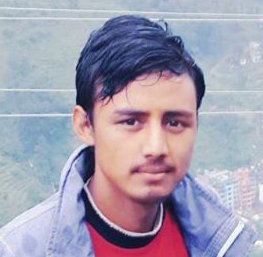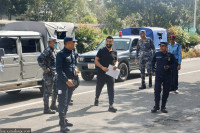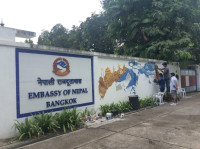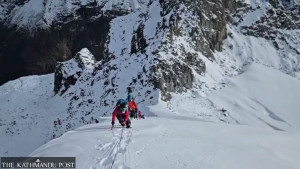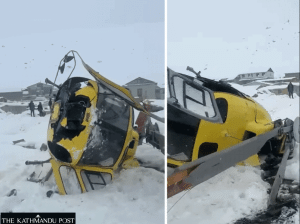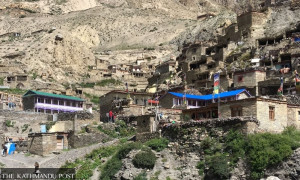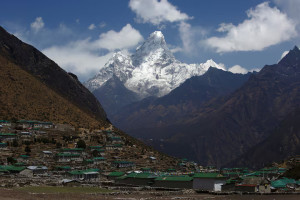National
Indrawati residents reel under shortage of drinking water
Debamaya Tamang of Jyamiremane in Indrawati Rural Municipality-8, Sindhupalchok, has to spend almost an entire day to fetch a vessel of water. She wakes up at 4am to collect water from a water source that is around one-and-a-half hour walk from her house.
Anish Tiwari
Debamaya Tamang of Jyamiremane in Indrawati Rural Municipality-8, Sindhupalchok, has to spend almost an entire day to fetch a vessel of water. She wakes up at 4am to collect water from a water source that is around one-and-a-half hour walk from her house.
“There’s always a long queue of people waiting for their turns to collect water. Frustrations run high and people end up in disputes over whose turn it is to get water,” said Tamang.
There are only two taps for the villagers in Indrawati-8—one at Jyamiremane Chok and another at the bazaar settlement. Various water sources of Indrawati-8 and 9 dried up after the devastating earthquake of April 25, 2015. People have been suffering from an acute shortage of water since then. Kedarnath Acharya, a local of Jyamiredanda, said that a lot of people depend on just one tap for their daily water needs. “We demand the authorities to permanently solve the problem of drinking water in our village,” said Acharya.
Various non-governmental organisations have been working in the area to manage the supply of water, but the locals still reel under water shortage. Banshalal Tamang, chairperson of Indrawati Rural Municipality, said, “I have taken initiatives to supply water to people’s households. We are soon going to launch a large-scale drinking water programme from the local level.”
Experts said that water sources in Indrawati are drying up due to climate change, population growth and encroachment.




 15.12°C Kathmandu
15.12°C Kathmandu